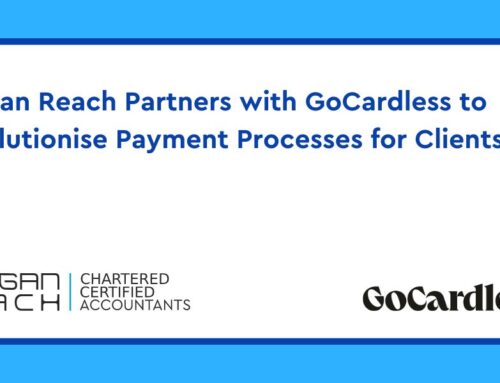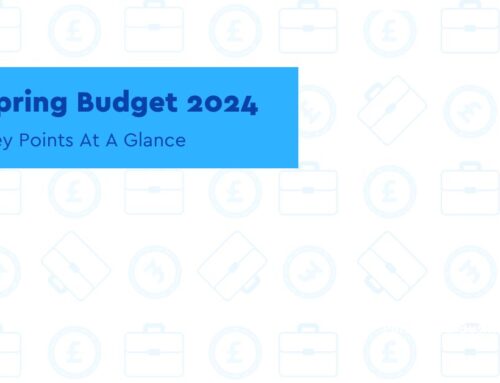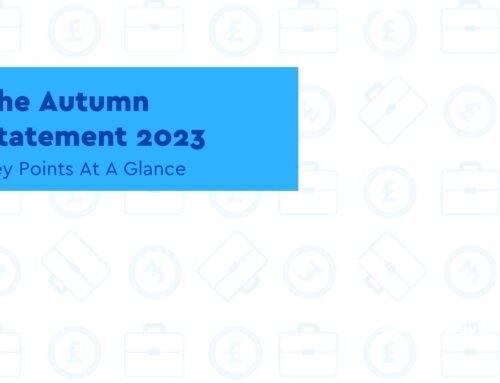News – Pension
Report highlights lack of awareness over pension tax relief
Key Points
- Pensions tax relief cost the government an estimated £42.7bn in 2020-21
- You can get tax relief on private pension contributions worth up to 100% of your annual earnings
Four in 10 taxpayers do not know that pension contributions automatically receive 25% tax relief despite an annual bill of over £42bn to pay for the tax break.
A research report into pension taxation highlights the public’s lack of awareness about the extent of tax relief on pensions. The publication of the report follows a freedom of information request which called on the government to release the findings, which have been delayed since 2016.
Pensions tax relief cost the government an estimated £42.7bn in 2020-21, and is frequently flagged as a possible area of reform at successive Budgets with threats of cutting or reducing the tax break from the current 25% tax relief for contributions for base rate taxpayers. Higher rate earners are entitled to up to 67% in relief, part claimed through self assessment.
When those with pensions who are aware of pension tax relief were asked how much the government has topped up their contributions, the mean response was by around 8% for basic rate taxpayers (versus 25% in reality) and 18% for higher or additional rate taxpayers (around 67% in reality).
The research also looked at whether there were better ways to incentivise people to pay into pensions, asking whether a flat rate government top-up to contribution set at 30%, or people being able to withdraw their retirement income tax free alongside a lower government top-up of 20% was preferable.
Three in 10 (28%) thought the flat rate system would make them increase the amount they personally save for retirement, and one-third (34%) favoured the tax-free retirement option. In both cases, the majority (64% and 58% respectively) thought these different systems would make no difference to the amount they save.
Many adults had not heard much about the mechanics of pension tax relief. Half (51%) were aware of relief rates varying based on incomes. However, when it comes to some of the more complex allowances and limits, awareness levels plummet.
For 2022/23 you can get tax relief on pension contributions up to £40,000 or 100% of your salary (whichever is lower). Any pension contributions that you make over this limit are taxed at the highest rate of tax you pay.
You get the tax relief automatically if your:
- Employer takes workplace pension contributions out of your pay before deducting Income Tax
- Rate of Income Tax is 20% – your pension provider will claim it as tax relief and add it to your pension pot (‘relief at source’)
If your rate of Income Tax in Scotland is 19% your pension provider will claim tax relief for you at a rate of 20%. You do not need to pay the difference.
Basic rate taxpayers get a 25% tax top up, so if you paid £100 into your pension, HMRC would effectively add another £25 which would bring the total contribution up to £125.
Higher and additional rate taxpayers can claim a further 25% and 31% respectively through their Self-Assessment tax returns.
If someone else pays into your pension
When someone else (for example your partner) pays into your pension, you automatically get tax relief at 20% if your pension provider claims it for you (relief at source).
If you’re in a workplace pension that allows other people to contribute you may need to claim the tax relief on those contributions – call or write to HMRC.
This article was sourced from Gov.uk, Accountants Daily and Pension Bee
News – SMEs
Companies House reform impacts SMEs
Key Points
- The reforms will give Companies House the power to challenge and remove information if it cannot be validated
- Small companies will be required to file both their profit and loss account and directors’ report
The Government has announced that there will be reforms made to Companies House to help its “priorities in national security, anti-corruption, tackling fraud and boosting enterprise”.
The reforms will give Companies House the power to challenge and remove information if it cannot be validated, transforming the registrar into a “gatekeeper” rather than a “passive administrator”.
The new proposals also stipulate that small companies will be required to file both their profit and loss account and directors’ report so that key information will be available on the public register, thus removing the option to file ‘filleted’ accounts.
The reforms were announced alongside a range of other operational changes to Companies House In a whitepaper published by the department for Business, Energy and Industrial Strategy.
Louise Smyth, chief executive officer of Companies House, said:
“We need the right data in the right place at the right time. This is fundamental to ensuring we drive confidence in the UK economy, which is our purpose. And people need to have confidence in that data.
“The challenge is always going to be trying to work across governmental organisations. People will always have slightly different requirements and needs, and there will always be different ways of working”
News – Property
Stamp duty rush led to surge in 35+ year mortgage terms
Key Points
- The first phasing out of the tax break in June resulted in 35,046 mortgages sold with terms of over 35 years.
- This was when the threshold for buyers to bypass the tax on a property purchase dropped from £500,000 to £250,000.
The stamp duty holiday rushes last year were followed by rises in the sale of mortgages with terms of 35 years or more, data has found.
Statistics collected through freedom of information data from the Financial Conduct Authority (FCA) showed that the first phasing out of the tax break in June resulted in 35,046 mortgages sold with terms of over 35 years.
This was when the threshold for buyers to bypass the tax on a property purchase dropped from £500,000 to £250,000.
Annually, the number of 35-year term mortgages sold was a 209 per cent rise on the same period in June 2020 where 11,320 mortgages with extended terms were issued.
In September, when the threshold dropped to its usual level of £125,000, 28,112 mortgages with a term of 35 years or more were sold. This was a 73 per cent increase on September 2020.
Meanwhile the average price of a residential property surged over the year meaning affordability would have been stretched for borrowers.
By the final phase of the stamp duty holiday in September, the average property price had reached £287,895, an 11.8% increase on the year before.
It was found that, despite the savings on stamp duty, which could have been a maximum of £15,000 in the first stage and £2,500 in the second, entering a mortgage term of 35 or more years would have been costly due to the amount of interest which needed to be paid.
It was calculated that where the average property price was £265,668 in June 2021, a buyer would have saved £3,283 on stamp duty. However, a 35-year mortgage with a 15 per cent deposit and two per cent interest rate would cost £88,438 in interest costs over the period.
If a 25-year term mortgage was taken, the interest costs would have been £66,914 lower.
In September, when the average property price reached £287,895 and the stamp duty saving was £2,499, paying the interest of a 35-year term mortgage would have incurred costs of £95,837 over the period.
On a 25-year term, a buyer could save £72,512 in interest payments.
This article was sourced from: https://www.mortgagesolutions.co.uk/news/2022/04/07/stamp-duty-rush-led-to-surge-in-35-year-mortgage-terms-quilter/
News – Economy
Inflation hits 30-year high of 7% in March
Key Points
- Transport, including petrol prices, were the biggest contributor to rising prices in March
- Wages are not keeping up with soaring inflation, and the cost of living is set to rise further
Prices are rising at their fastest rate since 1992 because of a huge increase in the cost of petrol and diesel.
Inflation rose to 7% in March, the highest rate in 30 years and beats February’s rise of 6.2%.
The Office for National Statistics (ONS) said fuel and food prices helped push up the Consumer Prices Index (CPI) measure of inflation.
Transport, including petrol prices, were the biggest contributor to rising prices in March. The average cost of petrol rose 12.6p between February and March. This compares with a rise of 3.5p per litre between the same months of 2021.
Diesel prices rose by 18.8p per litre this year, compared with a rise of 3.5p per litre a year ago.
Prices are expected to continue rising, as today’s increase does not take into account the hike to energy bills which was applied to millions of households two weeks ago.
Energy bills rose by an average of 54% for around 22million households on their energy provider’s standard variable tariff.
Wages are not keeping up with soaring inflation, and the cost of living is set to rise further as the Bank of England has predicted inflation could reach 8% by April.
It comes as figures yesterday show wages were already falling behind inflation in February.
Average salaries jumped 4% between December and February but real wages fell by 1% after taking inflation into account, according to the ONS.
There were vast differences in growth between the public sector, where total pay was up just 1.9%, compared to the private sector where pay soared by 6.2%.
On Monday state benefits, including the state pension, rose by an average of 3.1%.
Joanna Elson CBE, chief executive of the Money Advice Trust, said: “Today’s inflation figures will only add to the mounting pressure on households, with many already buckling under the strain of rising costs.
“Urgent action is needed to prevent more people facing impossible choices trying to meet basic needs, and at risk of an increasing burden of debt.
“Raising benefits above Monday’s 3.1 percent increase, would be a good start, along with more targeted support for people struggling with household bills.”
This article was sourced by: https://www.yourmoney.com/household-bills/inflation-hits-30-year-high-of-7-in-march/
Latest Snippets
Millions more to pay higher-rate tax
In the next four years the number of higher-rate taxpayers will rise 65%, from 4.1million to 6.8million, according to predictions from the Office for Budget Responsibility (OBR).
The rise is due to a freeze to tax thresholds and increasing inflation levels.
Thresholds have been frozen for everyone, and for higher-rate taxpayers paying 40% tax, the level has been held at £50,270 until April 2026.
The personal allowance, the amount everyone is allowed to earn before paying tax, was also frozen until 2026. These measures are expected to save the government £8.1billion by 2026.
At the same time inflation is soaring, to 7% for the 12 months to March, and is predicted to rise further.
Without these conditions, the number of people starting to pay the higher-rate of tax would have risen steadily, by 4.1million to 4.8million over the four years.
Higher-rate taxpayers, for example, are entitled to extra tax relief on pension contributions. Yet unless your employer deducts your pension contributions before you pay tax, you will need to claim the benefit via a self-assessment tax return.
Student loan interest rates set to rocket
The rate of interest some graduates pay on their student loans will hit 12% in September as high inflation triggers an interest rate rollercoaster for those with student debts.
The current reading for RPI inflation means that the maximum interest rate, which is charged to current students and graduates earning more than £49,130, will rise from its current level of 4.5% to an eye-watering 12% from September 2022. The interest rate for low earners will rise from 1.5% to 9%.
As an employer, you should make student loan deductions if your new employee’s P45 shows that deductions should continue, or your new employee tells you they’re repaying a student loan or a postgraduate loan, for example on a starter checklist.
Get In Touch
At Morgan Reach, we understand every business needs a little help now and again-especially when it comes to the financial side of things. Therefore, to help our clients and visitors we endeavour to cover as much of the business news as possible. If you are self-employed or run a business and need assistance and advice on how these news could make a difference to you or your business, feel free to get in touch with the experts at Morgan Reach. Our business growth experts at Morgan Reach will guide you through what support is available for you or your business as well as the latest news that may affect you.







